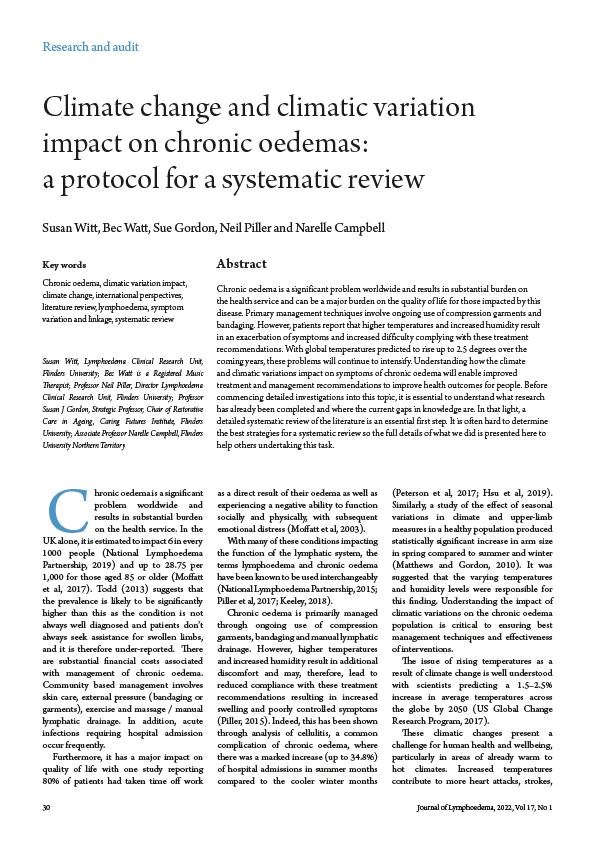Chronic oedema is a significant problem worldwide and results in substantial burden on the health service and can be a major burden on the quality of life for those impacted by this disease. Primary management techniques involve ongoing use of compression garments and bandaging. However, patients report that higher temperatures and increased humidity result in an exacerbation of symptoms and increased difficulty complying with these treatment recommendations. With global temperatures predicted to rise up to 2.5 degrees over the coming years, these problems will continue to intensify. Understanding how the climate and climatic variations impact on symptoms of chronic oedema will enable improved treatment and management recommendations to improve health outcomes for people. Before commencing detailed investigations into this topic, it is essential to understand what research has already been completed and where the current gaps in knowledge are. In that light, a detailed systematic review of the literature is an essential first step. It is often hard to determine the best strategies for a systematic review so the full details of what we did is presented here to help others undertaking this task.





